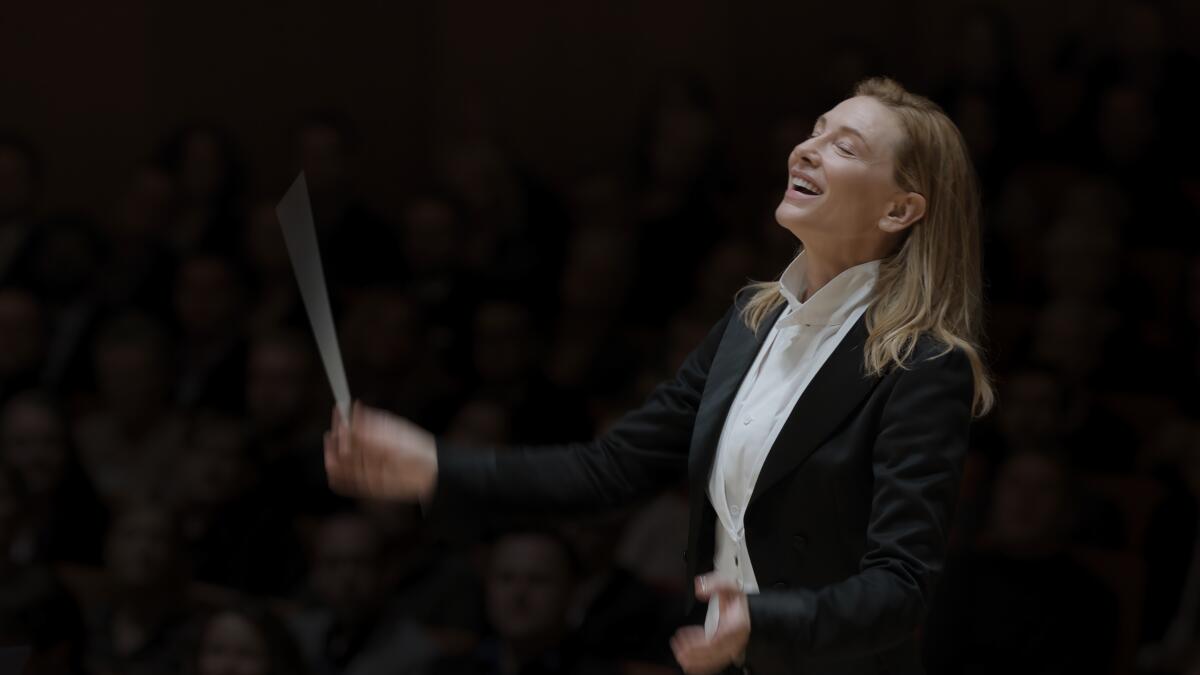What do the Oscars best picture choices tell us about the world we live in?

- Share via
Just what do the Academy Awards tell us about the world we live in?
I began thinking about this after I was contacted by Carl Plantinga, a research fellow and professor of film and media studies at Calvin University in Michigan. Plantinga was pushing a theory that, for better or worse, Oscars for best picture tend to honor films with simple, straightforward, morally clear messages and are less likely to go to morally complex or ambiguous films.
His argument — laid out as the Academy of Motion Picture Arts and Sciences prepares to hold its 95th awards ceremony on March 12 — is that films such as this year’s “Tár,” a complicated drama about political correctness, sexual harassment, art, genius, leadership, truth and deception, may be nominated for best picture (as Tár was), but more often than not they lose in the end.
Opinion Columnist
Nicholas Goldberg
Nicholas Goldberg served 11 years as editor of the editorial page and is a former editor of the Op-Ed page and Sunday Opinion section.
Filmmakers over the years have had better luck with more straightforward movies such as another 2023 nominee, “Top Gun: Maverick.”
“The academy tends to favor moral inspiration over moral challenge,” says Plantinga.
The classic example of this, Plantinga says, came in 1977, when the heroic fantasy “Rocky” won the best picture award over Martin Scorsese’s superior but disturbing “Taxi Driver.” A decade earlier, in 1968, two films I think of as morally complicated — “Bonnie and Clyde” and “The Graduate” — were nominated but lost to “In the Heat of the Night,” a more clear-cut story about a white Mississippi police chief and a Black Philadelphia detective learning to respect one another.
In 1966, “The Sound of Music” beat out “Dr. Zhivago,” a film that sent a mixed message about adultery and the Russian Revolution. In 2019, the formulaic buddy film “Green Book” beat “BlackkKlansman” and “Roma.” In 1990, “Driving Miss Daisy” won best picture and Spike Lee’s “Do the Right Thing” wasn’t even nominated.
Francis Ford Coppola’s “Apocalypse Now” lost after being nominated. Stanley Kubrick’s “Paths of Glory” was snubbed entirely.
Best picture is the only Oscars category that uses a preferential ballot, where voters rank all 10 nominees. Here’s how our critic would rank them.
This is all just anecdotal evidence, of course. Not everyone will agree with Plantinga’s theory, which even he acknowledges is more a tendency than a rule. For one thing, it’s a subjective judgment whether a movie is morally complex. For another, there are exceptions, especially in the modern era, including but not limited to “Midnight Cowboy,” the first and second “Godfather” movies, “Parasite” and “Nomadland,” all of which won Oscars for best picture.
Some people think Plantinga’s point is an obvious one that goes almost without saying. The Times’ former film critic Kenneth Turan told me that saying best picture winners tend toward moral clarity rather than moral complication is “like saying water is wet.”
“The academy talks about artistic excellence, but it’s also made up of Hollywood people and they like Hollywood movies, by and large,” Turan said.
Still, I found the theory intriguing because it speaks to something that bothers me: As a society, we are not comfortable with nuance and doubt — yet we need to be to make sense of our complicated world. Sophisticated, ambiguous films can help us see more than one side of a question and empathize with people who are unlike us. They challenge our way of thinking; they remind us that the world is usually not neatly divided into good guys and bad guys, right and wrong.
Blanchett plays a renowned classical conductor whose world gradually comes apart in this virtuoso return to filmmaking from writer-director Todd Field (“In the Bedroom,” “Little Children”).
Of course films that deliver messages of moral clarity and clearly separate right from wrong have value too. They can be inspirational, as Plantinga notes, and can encourage us to be our best selves. A buddy movie about people of different backgrounds overcoming their prejudices or a story of heroism or selflessness or perseverance against obvious evil can rouse and energize us. The same goes for a story of an underdog who defies expectations — or an aging, insubordinate former fighter pilot who proves he’s still the best.
But, frankly, I talked and thought a lot more about “Tár” after seeing it than I did about “Top Gun: Maverick.”
Were the filmmakers on Lydia Tár’s side or against her? Is the movie a skewering of wokeness and cancel culture or is Tár a serial sexual harasser who gets what she deserves? It’s unclear; it’s sending multiple messages about things that don’t lend themselves to easy judgments.
“These movies have the capacity to teach us something and to alter our responses,” Plantinga says. “That’s what conflict does.”
The actor teams up with director Joseph Kosinski and reunites with Val Kilmer in this grander, weightier sequel to the 1986 blockbuster.
Of course, as Turan notes, many people go to the movies for entertainment and escape, not to have their assumptions challenged. “If those people want torturous moral ambiguity, they can just read the newspaper,” he says.
Certainly that’s true. But in an era of partisanship, polarization, rancor and demonization, in a country where many people believe their side has a monopoly on truth, there’s much to be said for thinking complicated thoughts, for wrestling with conflicting ideas, and identifying with characters who aren’t simple heroes. Art that does that — in addition to entertaining us — can keep us from falling into reflexive, smug certainty and self-righteousness.
The alternative to black and white is not always Technicolor. Sometimes it’s shades of gray.
More to Read
A cure for the common opinion
Get thought-provoking perspectives with our weekly newsletter.
You may occasionally receive promotional content from the Los Angeles Times.














